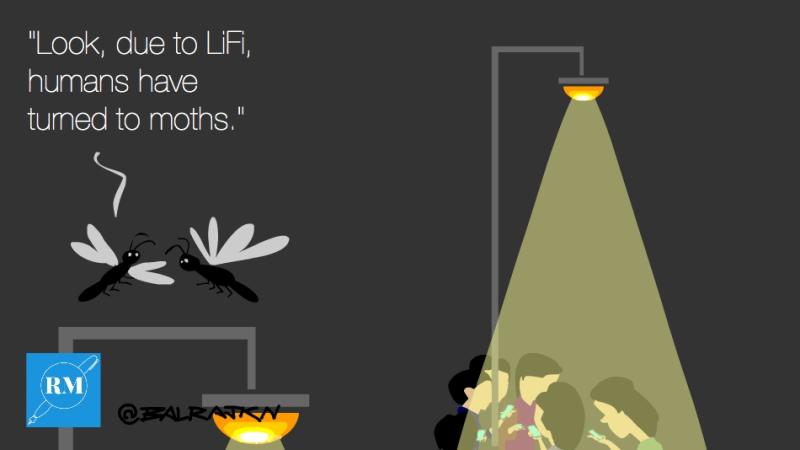
Imagine streaming a movie through your tube light or accessing the Internet through a street lamp. Light Fidelity (Li-Fi), a new communication system developed by Professor Harald Hass, can actually achieve this!
The existing Wi- Fi systems use radio waves to transfer data. Li-Fi, on the other hand, uses visible light. A Light Emitting Diode (LED) is used to transfer data by switching it on and off at speeds that are so high that they are invisible to the human eye. A light detector on the receiving device, which could be a laptop or a mobile phone, receives the light signal from the LED and converts it to an electronic signal. For example, the light detector registers a binary one when the LED is on; and a binary zero if the LED is off.
Li-Fi works on existing protocols and does not need a router or a hotspot, unlike Wi-Fi. It can transmit data at much higher speeds than the existing Wi-Fi systems. Moreover, since light cannot pass through walls, it is thought that Li-Fi signals cannot be easily hacked. But, Li-Fi has certain operational limitations. The light source will have to be kept on to use the network. The Li- Fi range is also smaller than the Wi-Fi range.
The radio-wave spectrum, through which Wi-Fi signal is transmitted, is limited. But, global demand for fast Internet access is increasing every day. Li-Fi could come to the rescue and revolutionize our digital systems. It can ease access to the Internet and help address the existing digital divide.





